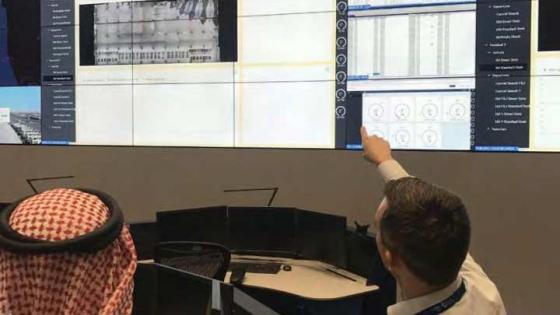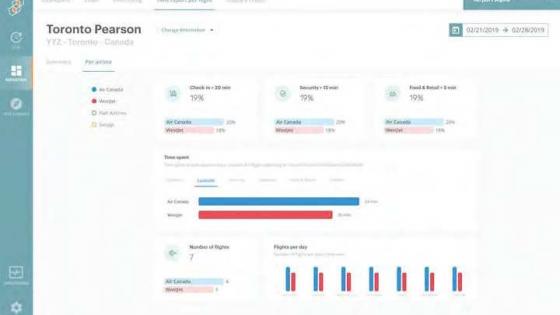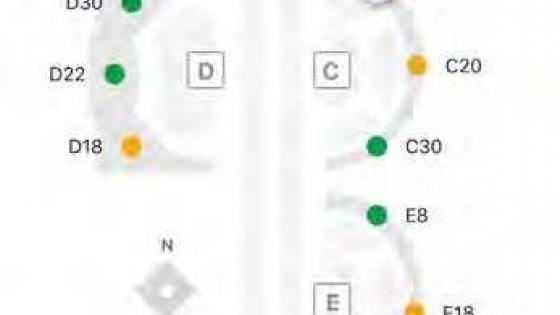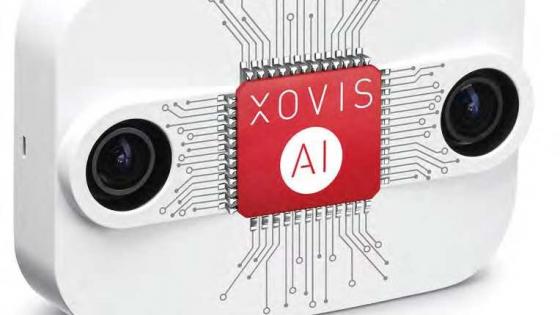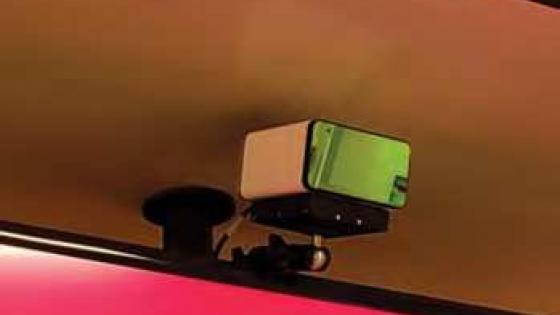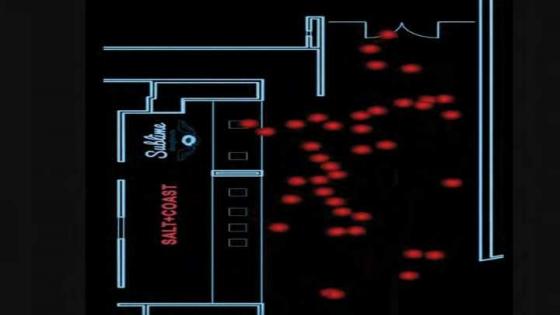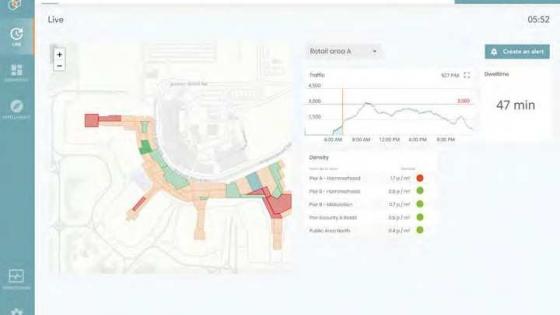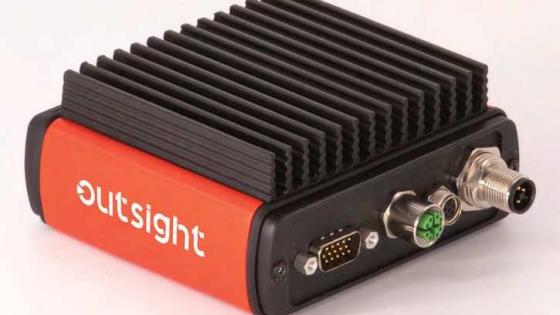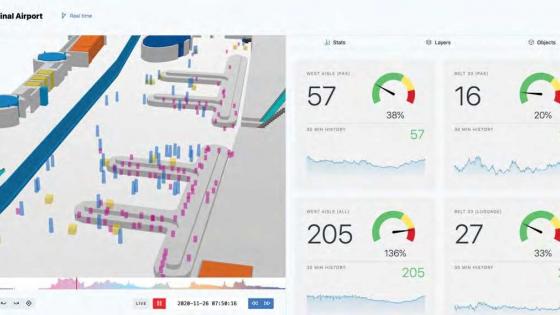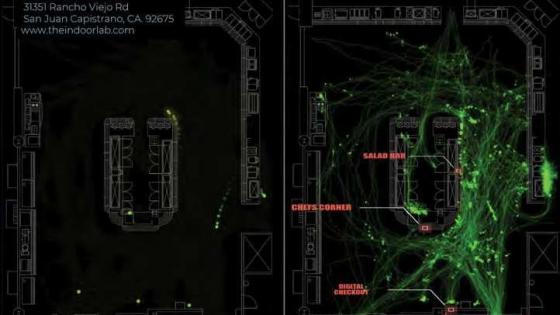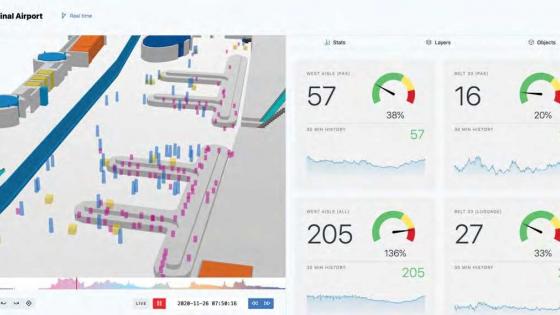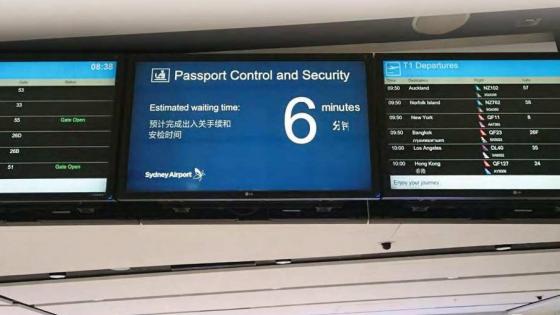Passengers have long loathed airport waiting lines. But, in the age of COVID, cutting queues is no longer just a matter of keeping travellers happy, finds Paul Willis
The pandemic and its impact on the airport sector rumble on. As does the need to ensure social distancing requirements and keep bottlenecks to a minimum. This in turn has led to airports prioritising queue management technologies, Florian Eggenschwiler, chief product officer at the Swiss crowd management tech company Xovis, recently told Airports International. According to Eggenschwiler, while “overall investment by airports into technology has gone down” because of the sharp revenue declines resulting from the pandemic, “a disproportionate amount of investment has still gone int queuing technologies”. Proof of this can be seen in the number of airports that have invested in queue management solutions in recent months.
Last November, for example, the US’s Philadelphia International announced the roll-out of a queue management system providing real-time passenger wait times in Terminal D/E, with plans to expand it to the rest of the airport by 2023.
At the same time in the UK, London/Gatwick unveiled an AI-based passenger flow solution provided by the technology firm Veovo. More recently, Stateside, in January 2022 Denver International announced the implementation of a queue management solution provided by Silicon Valley start-up LiveReach Media.
Broader uses
The need for these technologies is not just a response to social distancing requirements, said Eggenschwiler.Since the outbreak of the pandemic, airports have also been grappling with staff shortages, brought on in the first instance by large-scale lay-offs and then, as passenger numbers began to rebound, “airports haven't been able to onboard staff as quickly as they would have liked to,” he explained. According to Eggenschwiler, the other main reason for there having been considerable investment in these technologies is the impact of COVID-era travel requirements, such as health documents, additional visas and travel authorisations.
“This has led to significantly higher processing times, especially at check-in but also at other touchpoints,” he said. “This has posed significant challenges for many airports because while traveller numbers might only be at 70-80% of 2019 levels, people are spending so much longer in the terminal that, especially during peak hours, terminals are already full.”
Xovis’ queue management technology, which is now installed in more than 100 airports worldwide, helps airports manage these issues through the use of 3D stereo vision sensors mounted in the terminal ceiling.
Consisting of two lenses, the sensors are able to “perceive the world beneath as a 3D image” said Eggenschwiler. They detect individuals who are then anonymously tagged and tracked as they move. By linking the sensors together, virtually any individual can be followed from one sensor to the next across the airport space.
How airports are managing social distancing at queues
In light of the pandemic, many queue management solutions were adapted to provide social distancing measures.
Xovis, for example, created two social distancing tools for its airport clients. The first is a physical distancing indicator (PDI) that calculates the proximity of individuals to one another in real time. The airport sets a threshold for maximum proximity and, when this is transgressed sufficient times, the software triggers actions such as loudspeaker announcements or messages on digital signage, explained Xovis’ chief product officer, Florian Eggenschwiler.
The other Xovis tool calculates the proximity of individuals to one another in a given area over time. The software uses a colour-coded system to track this data. “The darker the colour, the greater the number of individuals who have been standing too close to one another,” he added.
Data from this second tool enables airports to make more strategic choices, such as “making changes to the queuing set-up or applying additional social distancing stickers on the ground,” Eggenschwiler said.
The Indoor Lab deployed a similar colour-coded system for airports at the height of the COVID-19 pandemic. However, it went a step further, by displaying the colour-coded system on digital signage in the airport.
“The message to the passengers was to go to the lighter coloured areas,” said The Indoor Lab’s Patrick Blattner. He noted that displaying this data helped lead to “a dispersion of traffic of roughly 15%”.
Smart Flows has also produced a colourbased system for clients, showing density levels throughout the airport.
“The airports define what they consider high densities according to their standards, whether it’s the legal standard in their country or the experience standard that they want to set up for their own airports,” explained Marie Faucon.
Unlike a conventional CCTV camera, Eggenschwiler explained, “what the sensor sees is to the human eye pretty much worthless because it creates a kind of 3D image that allows the sensor to run an algorithm to then detect the shape of a person”. He continued: “The footage is processed directly on the sensor and the only information leaving the sensor is text information: location data; the x and y co-ordinates of where a particular person is.”
This is important because it helps ensure the anonymity of the individuals being tracked, thus making the technology compliant with GDPR and other privacy regulations. Tracking individuals in this way enables operators to understand in real time the passenger flows in any particular area of their airport.
In the case of an airport security zone, for example, a virtual line can be drawn around the queuing area and any individuals who enter that line can be tracked to see how long it takes them to pass through. From this data, airports can provide passengers with up-to-theminute wait times.
At Dallas/Fort Worth, Texas, for example, where Xovis’ solution is installed, the airport displays the security wait time data on its website and on the airport’s smartphone app. The ability to provide this data makes a big difference to the passenger experience, said Eggenschwiler.
“If you're not a very experienced traveller, then it makes a huge psychological difference whether you see a long queue and you freak out about missing your flight or you see, okay, it's 20 minutes, then you can calculate that you have enough time to go through.”
People movement
Besides the passenger experience, queue data can be useful to airports for other reasons. One is to “optimise load balancing”, according to Eggenschwiler. In other words, ensuring that some touchpoints are not being overloaded while others are being under-utilised. Similarly, the data can be used to help manage staffing levels.
In airports where the management of the security zone is outsourced, the data also helps operators monitor the performance of third-party providers where minimum wait times are a condition of the providers’ service agreement.
These different uses can be broken down in to two broad categories, said Raul Bravo, CEO and co-founder of tech company Outsight, based in Paris: “The first is leveraging the data in real time. So, for example, you set up a threshold – such as a maximum density of people in a given area – and whenever the threshold is exceeded it triggers some kind of a response, like an announcement over the loudspeaker. The second way is to look at the data over time to analyse trends.”
The benefits of Lidar
Outsight’s crowd management technology, which is deployed at Paris Charles De Gaulle airport, uses Lidar, a laser-based 3D imaging tool most commonly known for its use in autonomous vehicles.
According to Bravo, Lidar is well-suited to queue management for two key reasons: “The first is that Lidar gives you a really clear picture of where things are.
“It gives you the shape, the size, the velocity and the position of an individual with an accuracy you cannot really have with cameras.
“Secondly, it is automatically anonymous. With a Lidar image, you cannot know who it is, you cannot even tell the gender,” he explained.
Outsight isn’t the only company offering Lidar-based queue management technology. Another is California-based tech provider The Indoor Lab.
According to The Indoor Lab co-founder Patrick Blattner, he was the first to bring Lidar to the airport space, with a project at Denver in 2016.
At the time, Blattner and his co-founder were working for another tech company, developing people tracking solutions that relied on a range of technologies – Bluetooth, Wi-Fi sensors, optical and infrared cameras. However, they were so impressed by the capabilities of Lidar that they decided to start The Indoor Lab to take advantage of the opportunities offered by the technology.
Since then they have implemented Lidar-based tracking solutions at a number of airports including Florida’s Orlando International, at the height of the pandemic in 2020, and at Dallas/Fort Worth in the past year.
For the Orlando project they were asked to track passenger movement in a 50,000sq ft area of Terminal 2. Because the terminal is flanked by windows on both sides and has an atrium overhead, “at different times of the day you've got a lot of different sun reflectivity,” explained Blattner.
“With conventional cameras reflectivity like this can blind the camera from distinguishing a human over a shadow,” he added. “That's why in the past we had to then bring in infrared cameras to pick up heat signatures.”
To pick up accurate heat signatures, he said, the infrared cameras have to be mounted directly overhead. For the Orlando project this would have been difficult because of the low ceilings in Terminal 2.
All this becomes a non-issue with Lidar, though, “because it's a horizontal field of view, so you basically set it up at [a height of] about 8ft” explained Blattner. The horizontal mounting also means that a single Lidar camera can track a much larger area than an overhead camera.
The future is virtual: just-in-time queuing
Last October, the US technology company Clear announced a new service that it said would allow travellers to reserve time spots in a dedicated security lane.
The service, which will be rolled out first at Orlando International Airport in Florida, is an example of remote or virtual queuing, also known as just-in-time queuing.
Having reserved their time slot, travellers enrol in Clear, go to the lane at the arranged time and scan a QR code before moving directly through security screening.
According to Clear, the reservation lanes will be located at the east and west checkpoints of the airport and will have a limited number of slots available each day. The Indoor Lab’s Patrick Blattner said he and his airport customers are also looking at just-in-time queuing integrations.
“We're just starting to scratch the surface,” said Blattner. “But we want to see the engagement, the experience and how it works with passengers and customers, and to work through some of the kinks before we really uncover the possibilities.
“I think as we roll it out, and as we start to work with our partners, there's going to be a whole host of new capabilities.”
For the Orlando installation, for example, they were able to cover nearly the entire 50,000sq ft space with just seven cameras.
The sun reflectivity is also a non-issue with Lidar, whose ability to track people is unaffected by light conditions. “It's a game changer,” said Blattner.
The versatility of Lidar means that it can be used outside. Blattner and his team are currently installing their hardware at two outdoor sites at Dallas/Fort Worth for queue management purposes. The first is to help the airport monitor queuing levels at the bus pick-up.
Blattner said: “In some areas, travellers are not able to get on the bus because the buses are too small and overcrowding occurs at different times of the day and week. So we're deploying Lidar in the next 30 days to carry out measurements.”
The second deployment is at the car toll plaza at the airport exit where congestion levels at peak times are leading to wait times of up to 90 minutes.
Software-driven solutions
The solutions detailed above require hardware (cameras and sensing technologies) as part of their installation. But there are some queue management systems that are entirely software-driven.
One such Software as a Service (SaaS) solution is the system developed by French firm Smart Flows, which works by leveraging existing network infrastructure – Wi-Fi, Bluetooth and airport cameras – to collect travellers’ phone signals in real time, using them to track travellers’ terminal journeys.
A key advantage of a solution like this is the lower investment costs for the airport, according to Marie Faucon, marketing manager at Smart Flows. Faucon told Airports International: “There is no CAPEX [capital expenditure], it’s just pure software. So it requires only OPEX [operational expenditure].”
Smart Flows’ software ensures airports can maintain GDPR compliance by only collecting smartphones’ media access control (MAC) address, a unique identifier that Faucon said “is anonymised as soon as it gets to our software”.
However, the software cannot provide the same granularity as the sensor-based solutions offered by Xovis, Outsight and The Indoor Lab; it cannot give an exact position of each individual. Instead, said Faucon, it gives “a realistic approximation of the number of people in an area”.
The accuracy of this approximation is routinely verified by Smart Flows using external data from the airport, she said. Smart Flows’ solution is in operation at Riyadh, Montréal and Hong Kong airports, among others.
While the data collected by these technologies is proving vital in queue management, it has many other potential use cases for airports, Faucon pointed out, including airport-wide passenger flow monitoring. She offered an example: “If I see one device disappearing from the Wi-Fi infrastructure at 1400hrs at Gate B and I know that at Gate B at 1400hrs there is a flight to Paris, for example, the software is going to tag this path as the path of somebody flying to Paris.”
With this data, the software can identify all other examples of travellers departing to Paris and track their movement through the airport terminal.
From the data, an airport can build up a picture of the behaviour of passengers flying to Paris “which is going to be rather different from the behaviour of passengers travelling to Los Angeles or New Delhi”, Faucon noted.
“This allows the airport to refine the quality of the service that it is going to provide for the passenger, meaning ultimately that it can offer a better experience at security, at check-in and in the retail and food areas,” she explained. “This is a very interesting added value for our customers.” AJ

